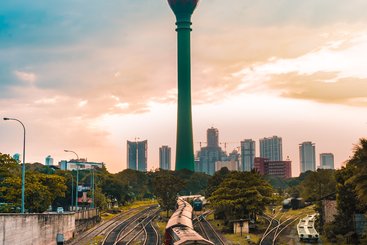At the World Economic Forum Annual Meeting in Davos on 20 January 2023, IMF Managing Director Kristalina Georgieva expressed cautious optimism about the global economic outlook in 2023 linked to inflation peaking, moderate global growth and China recovering faster than expected. While global uncertainties over the Russia-Ukraine war continue and debt crises in Pakistan and Sri Lanka, a recovering super-exporter China augurs well for faster trade integration within Asia to support global recovery.
A recent paper published in an IMF book South Asia’s Path to Resilient Growth argues that South Asia’s disappointing trade integration record suggests that looking to dynamic East Asia makes economic sense. Since the 1990s, South Asia-East Asia trade and free trade agreements (FTAs) have gathered pace linked to India’s trade re-aligning towards East Asia though its Look East and Act East Policies and China’s offshoring of global value chains to other parts of Asia. Although from a small base, total merchandise trade between South Asia and East Asia (in US dollar terms) grew rapidly at about 10% per year between 1990 and 2018 to reach about US$332 billion in 2018. A conservative projection suggests that this figure could rise to US$479 billion over the next few years. The number of FTAs linking economies in South Asia and East Asia could also increase to about 30 by 2030 from 10 in August 2021.
The prospect of rapid regional trade in Asia after the COVID-19 pandemic opens opportunities for South Asian economies like India, Bangladesh and Sri Lanka to participate in global value chains and services trade. What should be done?
First, regional trade integration within Asia can be encouraged by gradually reducing barriers to goods and services trade. Import tariffs in agriculture and murky non-tariff measures in manufacturing and services have risen in several South Asian economies since the 2008 global financial crisis. South Asia’s trade opening should be calibrated with tax reforms as trade taxes account for much of government revenue in some economies. Adjustment financing to losing sectors to reallocate factors of production and re-training workers is also essential to promote gains from trade and mitigate income inequality.
Second, improve the performance of special economic zones (SEZs) and invest in services SEZs to facilitate industrial clustering and exports. South Asia has over 600 SEZs in operation including in Cochin in India, Gwadar in Pakistan, Mirsarai in Bangladesh and Hambantota in Sri Lanka. However, these SEZs have a variable record measured by generating exports and jobs and fostering local linkages with the domestic economy. Competitive fiscal incentives only matter on the margin in the locational decisions of multinationals and long tax holidays deprive poorer economies of vital tax revenue. Improving the performance of SEZs in South Asia requires ensuring macroeconomic and political stability, adopting good practice regulatory policies towards investors, providing reliable electricity and 5G broadband cellular technology, and upgrading worker skills.
Third, pursue comprehensive FTAs eventually leading to the Regional Comprehensive Economic Partnership (RCEP) to provide for regional rules- based trade can help insure against rising protectionist tendencies. While South Asia is a latecomer to FTA-led regionalism compared to East Asia, it has made a start with the Japan-India FTA, the Sri Lanka-Singapore FTA and the Pakistan-Indonesia FTA. But regional economies need to improve tariff preference use by better preparing business on navigating complex rules of origin in FTAs and including new trade issues relevant global supply chains in future FTAs. Mega-FTAs like RCEP can provide a framework for regional rules-based trade to insure against rising protectionism. Although India opted out of the RCEP talks in November 2019, the door is open for it to join the RCEP agreement. India has returned to free trade deals and concluded FTAs with UAE and Australia in 2022. While some are concerned about the depth of RCEP provisions, India can prepare for future RCEP membership by undertaking structural reforms to boost business competitiveness in supply chains and foster greater regulatory coherence with East Asia. If India joins RCEP, the rest of South Asia may be incentivised to join due to the fear of being left out and suffering from trade diversion effects.
Fourth, a reinvented trade-focused Bay of Bengal Initiative for Multi-Sectoral Technical and Economic Cooperation (BIMSTEC) can facilitate stronger trade ties and support the interest of smaller members. Established in 1997 to promote regional cooperation between South Asia and Southeast Asia, BIMSTEC has evolved gradually. BIMSTEC presently has five South Asian members (India, Bangladesh, Bhutan, Nepal and Sri Lanka) and two Southeast Asian members (Myanmar and Thailand). The member-driven organisation is served by a small under-resourced secretariat in Dhaka with limited autonomy and technical skills. The adoption of the BIMSTEC Charter and the BIMSTEC Master Plan for Transport Connectivity are key achievements in 2022. The unfinished agenda to make BIMSTEC more focused on regional trade focused requires better resourcing of the BIMSTEC Secretariat, pushing to conclude the long running BIMSTEC FTA and building trade policy capacity in smaller economies. BIMSTEC should also introduce dialogue partner status to encourage trade cooperation with outsiders and open regionalism in Asia.
While broad South Asia-East Asia integration may be desirable, increasing tensions and complex geopolitics between China and India might rule it out for some time. Accordingly, a narrower geographical coverage between South Asian and Southeast Asian economies could act as a building block for eventual trade integration across Asia. Furthermore, the smooth flowing of South Asia-East Asia trade needs a resolution to the serious crisis in the World Trade Organization’s Dispute Settlement Mechanism over appointments to the body responsible for reviewing appeals from member states.
Regional trade integration within Asia is an idea whose time has come in an uncertain global economy. A coherent set of pro-trade policies and political will can make this a reality and uplift the lives of millions of people in Asia.


